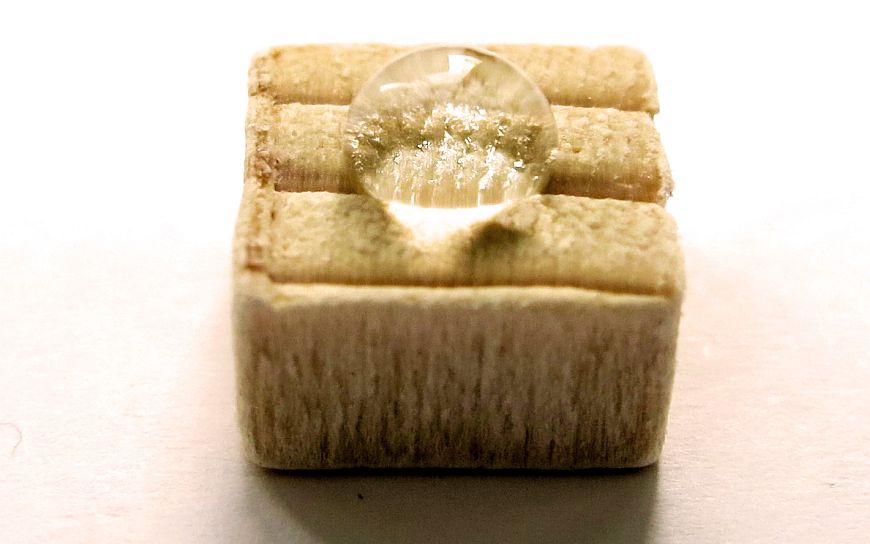FOCUS: Wood – a new discovery
Waterproof through and through

Integrating synthetic materials in wood
A sink as on-road test
For instance, they placed molecules called styrene, a component of the well-known synthetic material polystyrene, in the gaps between the cells, chemically bound them to the wood and interlinked them. This transforms natural wood into a composite material made of wood and polymers. “The wood even remains waterproof when I scratch it,” says Cabane. “This is because the synthetic material has penetrated deep inside the wood.” He is talking about millimeters, not centimeters. So if he wants to make a thick piece of wood waterproof, another technique is needed. “We’re currently building a sink,” says the researcher. This involves cutting the wood into thin layers, integrating the synthetic material and sticking the layers back together again – which is referred to as veneering.
The team’s research is not quite there yet, however. They plan is to move away from harmful carrier fluids and use water or supercritical carbon dioxide (CO2) instead of solvents in future. After all, these substances aren’t just safe; they are also available in abundance – another pivotal factor in the mass production of waterproof wood and its acceptance among consumers.
Further Information
Dr. Etienne Cabane
Applied Wood Materials
Phone +41 58 765 40 78
Editor / Media contact
Amanda Arroyo
Communication
Empa image gallery
-
Share

